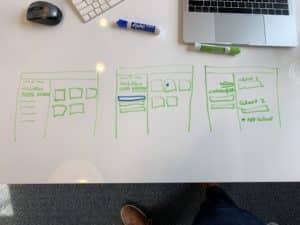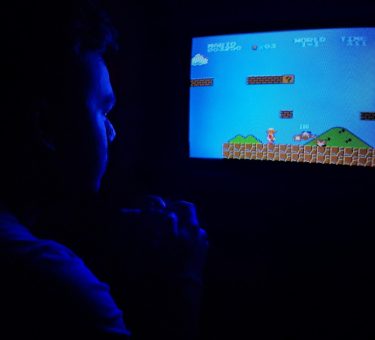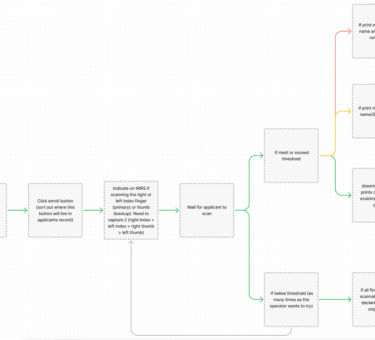Prototyping is the design thinking tool that’s getting us all through COVID-19 social distancing. We’re all doing it, whether we realize it or not.
I recently completed a course from IDEO U on rapid prototyping in the context of solving large problems for businesses. (I highly recommend it–it’s a great refresher on keeping prototypes simple, finding creative ways to test ideas, and the balance of when to diverge versus when to converge when you’re ideating.) So I was already in the prototyping mindspace when it became necessary to stay home and shift much of my daily life without notice.
At a high level, the goal of prototyping is simple: create the simplest, cheapest, most lightweight version of a product or system so that you can gather test data. It often helps to timebox the prototyping process in order to drive consensus and make sure the prototype stays simple. From there, you can use your learnings to inform further iterations and improvements so that, in the framework provided by IDEO, your solution is “desirable, feasible, and viable.”
Seems simple, but what does that mean in practice? For a digital product, it might mean a napkin sketch of a mobile screen with just enough fidelity to get a reaction. For a physical product, it’s an arts and crafts project where you try to mimic the size, shape, and weight of your idea with easily accessible materials. And for service design, it might be a role-play with a first draft of a script.

But right now, the best evidence of the power of prototyping can be found in our own homes. Literally.
The ways that we’re shifting our social interactions around staying home has been a master class in the effectiveness of prototyping. We’re pivoting to the quickest way to get to desirable, feasible, and viable, and in the process we’re finding new insights and benefits.
A personal example is the way I’ve been working out with my friends.
Normally, a few gym friends and I take a tabata-style workout class a few times a week. We’re familiar with the structure of the class, the exercises, and how it might vary depending on the day of the week.
When Illinois shut down all non-essential businesses in March, among my thoughts was, “How am I going to stay in shape if I can’t get to the gym?” It definitely wasn’t my first thought, and it pales in comparison to some of the larger issues folks are facing right now, but I knew for my mental health it was going to be important to keep moving and continue my fitness routines.
My friends were feeling the same way, so we prototyped. I sent around a Google Hangouts link, we found an online tabata interval timer, and we picked some exercises. When we were all logged on, I shared the Chrome window with the timer and placed a bluetooth speaker next to my computer to play music for everyone.
Was it janky? Yes. Did it prove the concept enough to get in a good workout that we wanted to do again? Yes.
From there, we’ve iterated:
- We missed the instructor giving us countdowns, so we decided that whoever chose an exercise/station would be in charge of leading those rounds
- To make sure we were hitting different muscle groups throughout the workout, we made a Google document of workout-from-home-friendly exercises to choose from
- The interval timer we were using was free and easy to set up, but was a little confusing to follow in the moment, so we started using its built-in color coding to differentiate short rests and long rests
In households and organizations across the world, individuals, families, friend groups, and companies are using similar rapid prototype frameworks to adapt to changing circumstances. Parents are prototyping homeschool strategies to best fit their kids’ needs and their own busy schedules. Hospitals are re-arranging their campuses and intake flows to better care for COVID patients while keeping non-COVID patients safe. And everyone with bad eyesight is prototyping filter placements so that their glasses don’t fog up when they’re wearing their masks.
At Tandem, our team’s ability to prototype has expanded from the custom software products we create for our clients to our processes themselves, like adapting our normal in-person project kickoff workshops to be effective as digital events.
At the end of the day, life is just a series of prototypes and iterations we do to make ourselves happier, safer, and healthier. One small silver lining of this pandemic is that it’s forcing us all to expand our design thinking chops and iterate quicker. We don’t know how long we’ll be at home, and we don’t know what comes after, but we know the skills we’re all practicing now will remain valuable as we all work toward a more desirable, feasible, and viable future.









